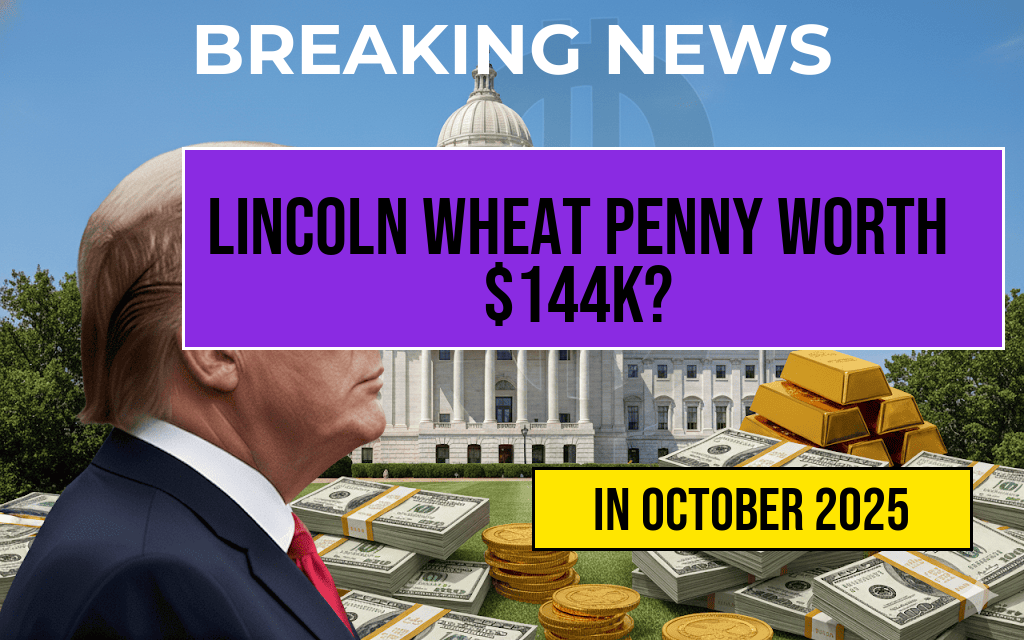Amid the vast circulation of pennies across the United States, a particular specimen of the Lincoln Wheat Penny has captured the attention of collectors and enthusiasts alike. Valued at approximately $144,000, this rare coin remains surprisingly in circulation, raising questions about its authenticity, rarity, and the likelihood of encountering such a valuable piece in everyday transactions. The Lincoln Wheat Penny, first minted in 1909, features a design that has become iconic among numismatists, but only a small subset of these coins are worth such extraordinary sums. Experts emphasize that while many Wheat Pennies are common, a handful with distinctive minting errors, unique historical features, or exceptional preservation can command staggering prices. This article explores the story behind this high-value penny, its origins, current circulation status, and what collectors should know about identifying and valuing rare coins in everyday change.
The Legend of the $144,000 Lincoln Wheat Penny
Origin and Historical Significance
The Lincoln Wheat Penny was introduced in 1909 to commemorate the 100th anniversary of Abraham Lincoln’s birth. Designed by Victor David Brenner, its obverse displays a profile of Lincoln, while the reverse depicts two wheat stalks framing the denomination. Production of Wheat Pennies continued until 1958, making them one of the most recognizable and widely circulated coins in American history. Their durable copper composition and iconic design have cemented their place in both monetary history and popular culture.
The Discovery of a Rare, Valued Coin
The specific penny valued at $144,000 reportedly surfaced in recent years through a rare find—an apparent minting error or rare variant that significantly increases its worth. According to numismatic experts, such coins are exceedingly rare, with only a handful known to exist. The coin’s high valuation is primarily based on its exceptional condition, unique markings, or minting anomalies, which can include double strikes, off-center impressions, or unusual metal compositions. Many of these coins are discovered by accident in circulation, often overlooked by casual observers.
Are These Valuable Coins Still in Circulation?
Rarity and Accessibility
Despite their high value among collectors, most Lincoln Wheat Pennies—regardless of rarity—remain in circulation across the U.S. economy. The specific coin valued at $144,000, however, is likely a one-of-a-kind specimen or part of a very limited number of known examples. It is improbable that such a coin would be found in loose change today, especially considering the extensive circulation and wear typical of coins exchanged daily. Nonetheless, the possibility of discovering a rare Wheat Penny persists, especially among coin enthusiasts who meticulously examine their collections or pocket change.
Authentication and Verification
Coin experts advise that anyone who suspects they have found a high-value Wheat Penny should seek professional authentication. Certified coin grading services, such as PCGS or NGC, can verify the coin’s rarity, condition, and authenticity. Factors influencing value include the coin’s mint mark, year of production, and overall preservation. For example, the 1909-S VDB variety is highly sought after, but even more so are coins with minting errors or unique features that set them apart from standard issues.
Factors Contributing to a Penny’s Value
| Factor | Description |
|---|---|
| Mint Year | Some years, like 1909-S VDB, are more valuable due to historical significance or limited mintage. |
| Mint Mark | Coins from certain mints (e.g., San Francisco, Denver) carry different values based on rarity. |
| Condition | Uncirculated or mint condition coins fetch higher prices, especially those with minimal wear. |
| Errors and Variations | Minting errors, double strikes, or unusual die varieties greatly increase a coin’s worth. |
| Historical Significance | Limited production runs or coins from specific years can add to collectibility and value. |
Protecting Your Coins and Maximizing Value
How to Identify Valuable Wheat Pennies
- Check for rare mint marks, especially “S” or “D” from specific years.
- Look for distinctive errors, such as doubling or off-center strikes.
- Assess the coin’s condition—unblemished coins with sharp details command higher prices.
- Research the coin’s year and mint mark using reputable numismatic resources or catalogs.
Storing and Preserving
Proper storage in coin albums, slabs, or protective holders helps preserve the coin’s condition and prevents damage that could diminish its value.
Current Market and Collector Trends
The market for rare Lincoln Wheat Pennies remains active, with collectors continuously seeking out specific varieties and errors. Auction houses and online marketplaces often feature high-profile sales of rare coins, sometimes fetching prices well above their estimated values. The discovery of a Wheat Penny valued at over $140,000 in circulation underscores the ongoing potential for extraordinary finds. However, experts caution against overestimating the likelihood of encountering such a coin casually, emphasizing diligent research and professional appraisal for serious collectors.
For more detailed information on American coinage, visit Wikipedia’s page on the U.S. cent or consult professional numismatic resources like the Professional Coin Grading Service (PCGS) and Numismatic Guaranty Corporation (NGC).
Frequently Asked Questions
What makes the Lincoln Wheat Penny valuable enough to be worth $144,000?
The Lincoln Wheat Penny‘s high value is primarily due to its rarity, especially in mint condition or with errors. Certain key dates and misprints can significantly increase its worth among collectors.
Is it possible to find a valuable Lincoln Wheat Penny still in circulation today?
While most Wheat Pennies have been removed from circulation, some rare and highly sought-after coins may still occasionally be found in pocket change. However, the chances are slim, and most valuable pieces are in collections or auctions.
How can I determine if my Lincoln Wheat Penny is valuable?
To assess the value of your Lincoln Wheat Penny, examine its year, mint mark, and condition. Consulting a professional coin appraiser or referencing a current coin value guide can help you determine its worth.
Are all Lincoln Wheat Pennies from circulation worth a lot today?
No, most Lincoln Wheat Pennies are only worth their face value unless they are rare, have errors, or are in exceptional condition. The majority of circulated coins are worth only one cent.
What should I do if I think I have a valuable Lincoln Wheat Penny?
If you believe your coin is valuable, avoid cleaning it to preserve its patina. Store it safely and consider consulting a professional coin dealer or grading service for an official appraisal and potential sale.






